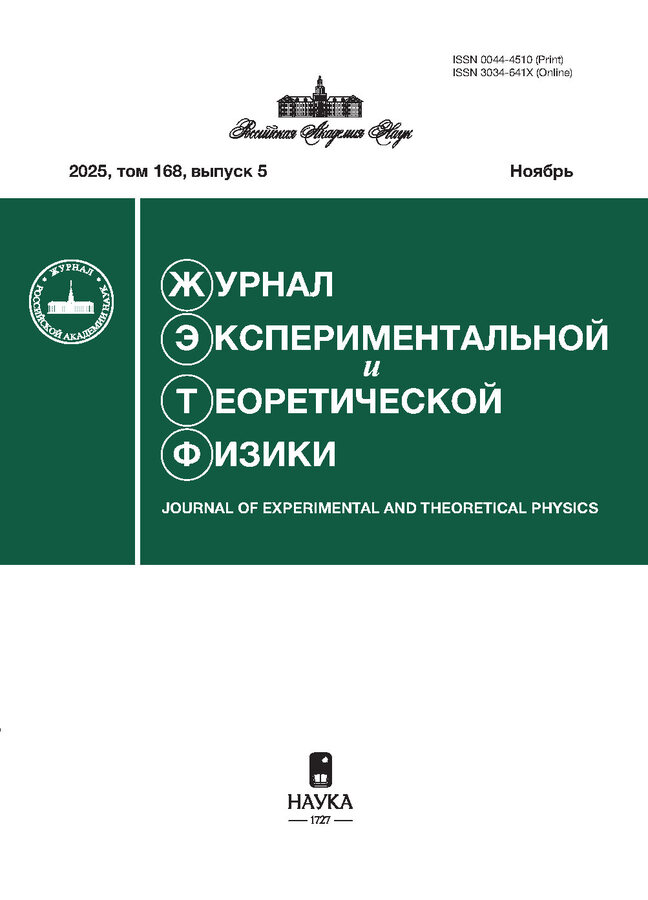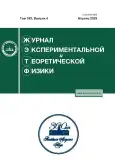Нелинейный параметрический резонанс в простейшей модели солнечного динамо
- Авторы: Серенкова А.Ю1, Соколов Д.Д1,2, Юшков Е.В1,2,3
-
Учреждения:
- Московский государственный университет имени М. В. Ломоносова
- Московский центр фундаментальной и прикладной математики
- Институт космических исследований Российской академии наук
- Выпуск: Том 163, № 4 (2023)
- Страницы: 514-523
- Раздел: Статьи
- URL: https://journals.rcsi.science/0044-4510/article/view/145389
- DOI: https://doi.org/10.31857/S0044451023040089
- EDN: https://elibrary.ru/LUGKNR
- ID: 145389
Цитировать
Полный текст
Аннотация
Исследуются свойства нелинейного параметрического резонанса на примере работы маломодовой динамо-модели Паркера. Данная модель представляет собой систему из четырех обыкновенных дифференциальных уравнений и в простейшем приближении описывает процессы генерации и осцилляции крупномасштабных магнитных полей в звездных системах. В отсутствие нелинейных эффектов рассматриваемая задача, по аналогии с системой гармонических колебаний, допускает асимптотическое выделение кратных резонансных частот. Однако несмотря на то, что на первый взгляд на этих частотах разумно ожидать усиления амплитуды и в нелинейном случае, продемонстрировано, что при наличии нелинейных слагаемых поведение системы существенно более сложное. В частности, на резонансных или малых частотах может наблюдаться подавление генерации, в то время как усиление происходит в непосредственной близости от резонанса или на достаточно больших частотах. Обсуждаются причины такого поведения, а также возможность влияния параметрического резонанса на установление планетарных динамо-циклов.
Об авторах
А. Ю Серенкова
Московский государственный университет имени М. В. Ломоносова
Email: serenkova.ai19@physics.msu.ru
119991, Moscow, Russia
Д. Д Соколов
Московский государственный университет имени М. В. Ломоносова; Московский центр фундаментальной и прикладной математики
Email: serenkova.ai19@physics.msu.ru
119991, Moscow, Russia; 119991, Moscow, Russia
Е. В Юшков
Московский государственный университет имени М. В. Ломоносова; Московский центр фундаментальной и прикладной математики; Институт космических исследований Российской академии наук
Автор, ответственный за переписку.
Email: yushkov.msu@mail.ru
119991, Moscow, Russia; 119991, Moscow, Russia; 117997, Moscow, Russia
Список литературы
- V.N. Obridko, M.M. Katsova, and D.D. Sokolo, Monthly Notices of the Royal Astronomical Society 516.1, 1251 (2022).
- F. Stefani, J. Beer, A. Giesecke, T. Gloaguen, M. Seilmayer, R. Stepanov, and T. Weier, Astronomische Nachrichten 341, 600 (2020).
- D. Moss and D. Sokoloff, Astr. and Astrophys. 553, A37 (2013).
- D. Moss and D. Sokoloff, Astr. Reps. 61(10), 878 (2017).
- D. Moss, N. Piskunov, and D. Sokolo, Astr. and Astrophys. 396(3), 885 (2002).
- E.N. Parker, The Astrophys. J. 122, 293 (1955).
- N.W. McLachlan, Theory and Application of Mathieu Functions, Clarendon Press, Oxford (1947).
- Ф. Краузе, К.-Х. Рэдлер, Магнитная гидродинамика средних полей и теория динамо, Пер. с англ., Мир, Москва (1984).
- Л. Ландау, Е. Лифшиц, Теоретическая физика, Физматлит, Москва (2001).
- H. Schwabe, S onnenbeobachtungen im Jahre 1843, Von Herrn Hofrath Schwabe in Dessau. 21, 233 (1844).
- M.N. Gnevyshev, Solar Phys. 51(1), 175 (1977).
- S.M. Tarbeeva, V.B. Semikoz, and D.D. Sokolo, Astr. Reps. 55(5), 456 (2011).
- G.Ruediger and A. Brandenburg, Astr. and Astrophys. 296, 557 (1995).
- J.C. Butcher, Numerical Methods for Ordinary Di erential Equations, John Wiley and Sons (2016).
- S.M. Stigler, The History of Statistics: The Measurement of Uncertainty Before 1900, Harvard University Press, Harvard (1986).
- Л.Л. Кичатинов, А.А. Непомнящих, Письма в Астрон. Ж. 41(7), 409 (2015).
Дополнительные файлы










